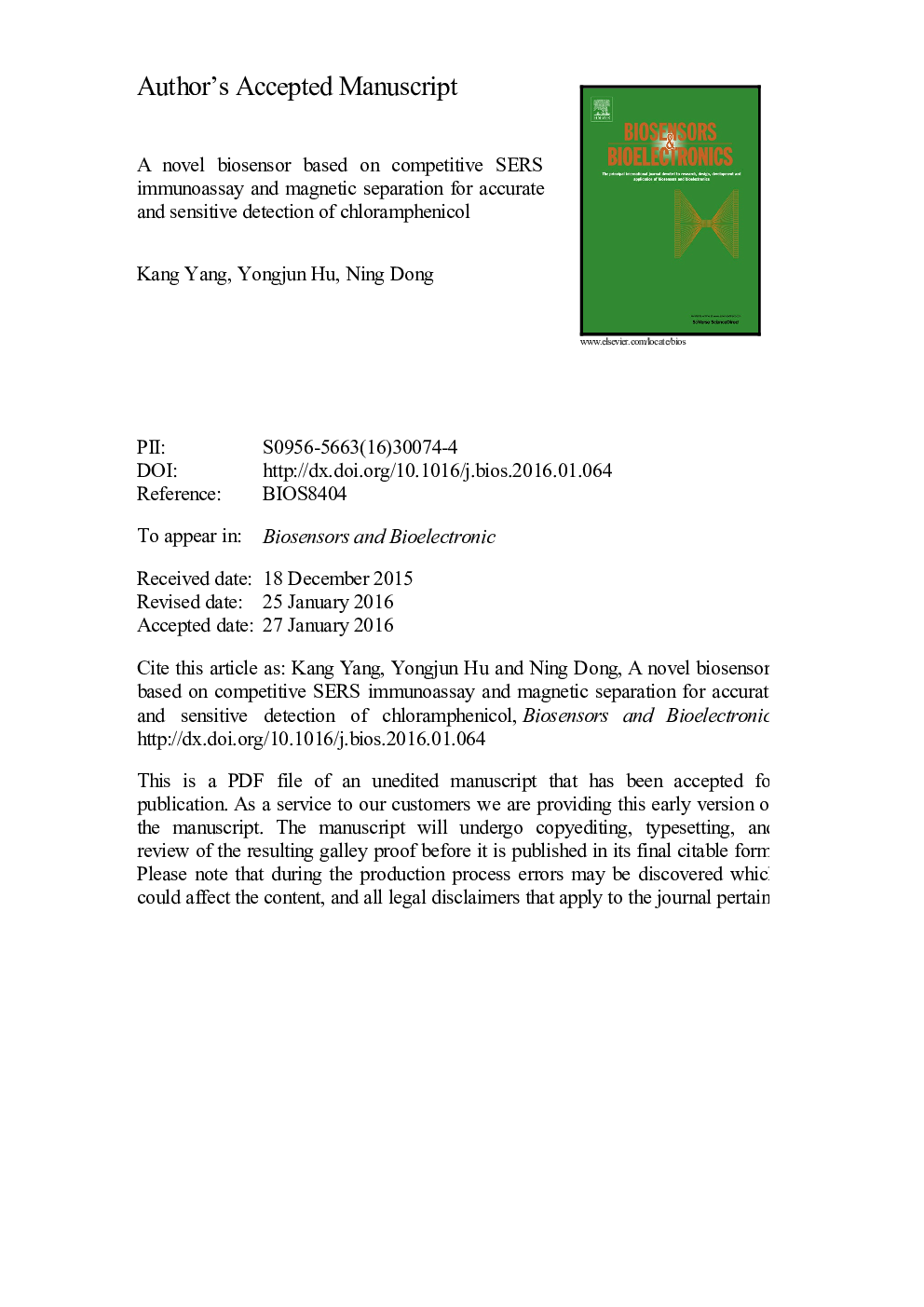| Article ID | Journal | Published Year | Pages | File Type |
|---|---|---|---|---|
| 7230815 | Biosensors and Bioelectronics | 2016 | 27 Pages |
Abstract
The accurate and sensitive detection of chloramphenicol (CAP) is particularly imperative to public health and safety. Here, we present a novel sensor for residual CAP detection based on competitive surface-enhanced Raman scattering (SERS) immunoassay and magnetic separation. In this nanosensor, functionalized Au nanoparticles (AuNPs) were labeled with the Raman reporter molecule (e.g. 4,4â²-dipyridyl). With the addition of free CAP, a competitive immune reaction was initiated between free CAP and above AuNPs for conjugating with CAP antibody-modified magnetic nanoparticles (MNPs). Instead of the solid substrate, the antibody conjugated-magnetic beads were used as supporting materials and separation tools in the present sensor. With the aid of a magnet, the mixture was removed from the supernatant for concentration effects. This caused obvious change of SERS signal intensity obtained from supernatant. The SERS signals were collected from the supernatant directly, which made the SERS measurements more stable, repeatable and reliable. The proposed SERS-based magnetic immunosensor allows us to detect CAP in a fast, selective and sensitive (1.0Â pg/mL) manner over a wide concentration range ( 1-1Ã104Â pg/mL). In addition, these results demonstrate that this immunosensor holds great potential for the detection of antibiotics in real aquatic environment, which is crucial to our life.
Related Topics
Physical Sciences and Engineering
Chemistry
Analytical Chemistry
Authors
Kang Yang, Yongjun Hu, Ning Dong,
